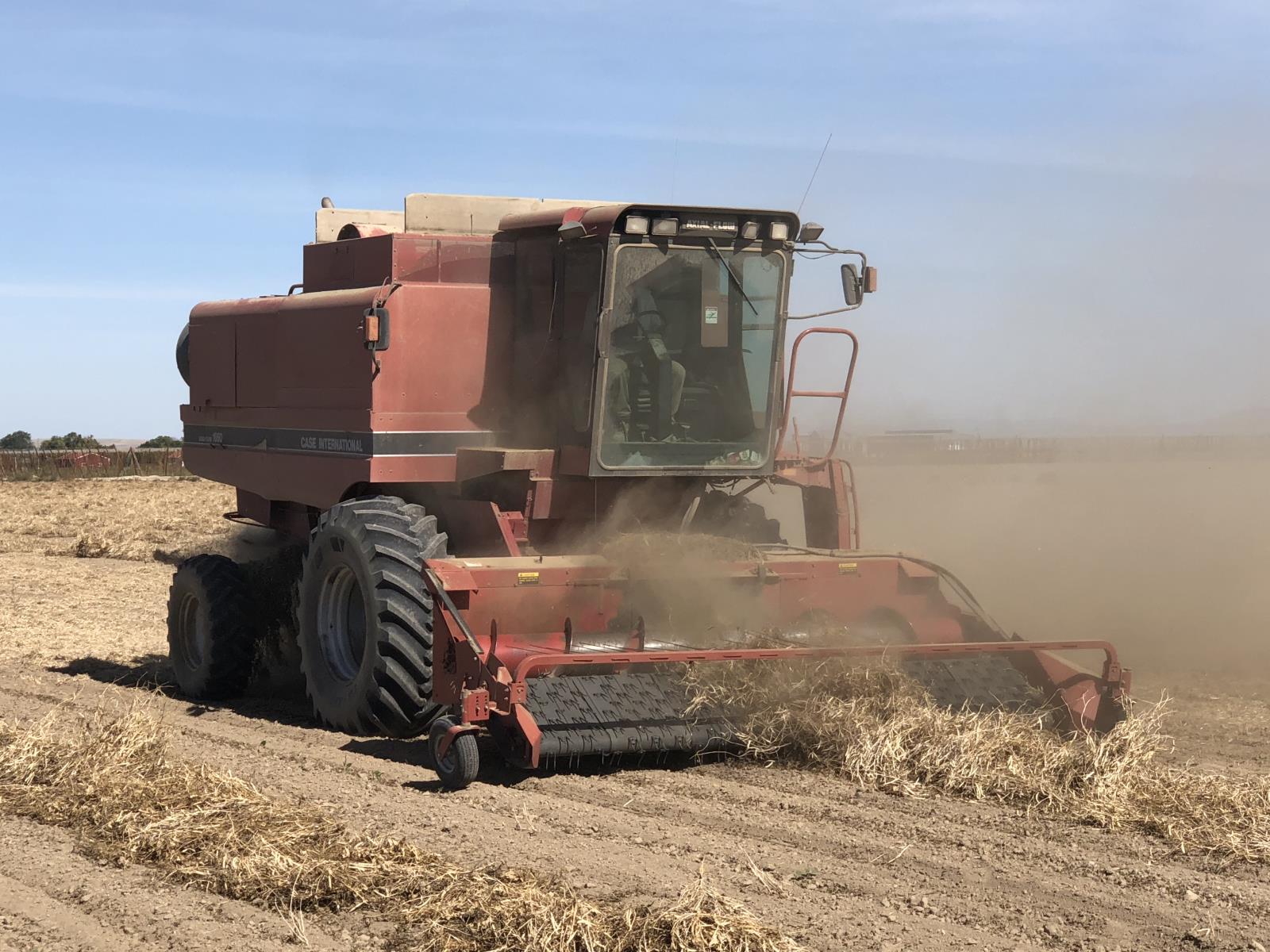Idaho dry bean acres could rise this year

By Sean Ellis
Idaho Farm Bureau Federation
POCATELLO – Idaho dry bean farmers have suffered through a few years of woeful prices but things are starting to change.
Dry bean prices are ticking up and acres are expected to increase in Idaho this year after decreasing significantly over the past two years.
“The profit potential for dry bean growers has been very minimal the last couple of years,” said Don Tolmie, production manager for Treasure Valley Seed Co. in Homedale. “But we’re in a position now where these guys can make a little money growing dry beans and that’s encouraging.”
According to USDA’s National Agricultural Statistics Service, the average marketing price for Idaho dry beans hovered in the mid- to low-$30 per hundredweight (cwt) range from 2011 to 2015, then decreased to $27 in 2016 and 2017 before dropping to $23.40 in 2018 and $22.40 in 2019.
Dry bean prices started rising toward the end of 2019 and are now up significantly compared with this time last year, Tolmie said.
“We’re seeing anywhere from a 25-40 percent increase in prices over this time last year and it’s pretty much across the board in all market classes of dry beans,” he said. “We’ve seen a pretty significant increase in the price of dry beans.”
The contracts that Idaho farmers are receiving to grow dry beans this year are up 15-40 percent, depending on bean variety, he added.
“The bean prices have definitely come up this year,” said BJ Metzger, the Idaho manager for Kelley Bean Co.
As a result of the price increase, bean acres could rise significantly in Idaho this year, said Jerome County Farm Bureau President Carl Montgomery, a member of Idaho Farm Bureau Federation’s bean committee.
Idaho dry bean acres, not including chickpeas, totaled 62,000 in 2017 but fell to 51,000 in 2018 and 41,000 in 2019.
“You can see by the acreage totals that beans haven’t been a very popular crop in Idaho the past few years,” Montgomery said. “I suspect there will be a lot more acres planted in the state this year.”
Dry beans were the state’s No. 8 ranked farm commodity two years ago in terms of farm cash receipts but dropped to No. 10 last year due to the fewer acres and lower prices.
Idaho ranks No. 5 in the nation in dry bean production but is the country’s No. 1 bean seed producing state. About 70 percent of the dry beans grown in Idaho are for seed.
Tolmie said a challenging bean production season last year in Canada and some of the United States’ top bean-producing states, including North Dakota, Minnesota, Michigan and Wisconsin, is a big factor in the recent price increases.
As much as 35 percent of the beans planted in those areas were not harvested last year year and many of the harvested beans weren’t up to the industry’s normal quality standards, Tolmie said.
“So, quality and quantity were down,” he said. “As a result, we’ve seen a significant price increase in all market classes of dry beans.”
“In some of the big bean producing areas, they had trouble getting their crop planted and harvested last year,” Montgomery said. “There’s a shortage of beans.”
The U.S. is the global leader in edible dry bean production and American farmers plant between 1.5 million and 2 million acres a year, according to the U.S. Dry Bean Council.
The previous few years of low dry bean prices were due to a glut of product that was exacerbated by trade issues that caused U.S. soybean farmers to plant more dry beans, Tolmie said.
“They turned to dry beans, which resulted in a glut,” he said. “But last year pretty much wiped that glut out.”
Still can't find what you are looking for? Find by topic:
- Achievement Award (YF&R)
- Actions Alerts
- Advocacy
- Ag Ambassadors
- American Farm Bureau
- American Farm Bureau Policy Book
- Archive Photos
- Articles
- Board of Directors
- Calendar - State/District
- Calendar - County
- Capitol Reflections
- Collegiate Chapters
- Committee Application Form
- Commodities
- Convention Annual
- County Presidents & Board Information
- County Resource Page
- Delegate Form
- Discount Programs
- Discussion Meet
- Discussion Meet - High School
- Education Programs
- Events
- Excellence Award (YF&R)
- Expense Voucher
- Flickr
- Gem State Producer
- High School Discussion Meet
- High School Speech Contest
- Hope in Idaho Ag
- House of Delegates Credentials Form
- IFBF Board of Directors
- IFBF Policy Book
- IFBF Staff
- Insurance
- Legislative Action Program
- Legislative Issues
- Library
- MAC Trailer
- Magazines
- Map My Benefits
- Member Benefits
- Member Discount
- Membership Application
- Mission Statement
- Moving Agriculture to the Classroom
- Newsletter Sign up
- News Releases
- News Room
- Open Range Law
